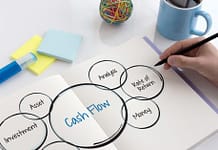Kauna grass craft products were originally made for neighbourhood software purposes. The stem is also relished as food. Kauna items were generally fundamental in design, with a touch of coloration in the event that they had been wanted for ceremonial gifting.
The most famous product amongst local Manipuri’s are the mats, mattresses, and cushions which function as furniture in a room wherein humans do maximum socializing, running, and ingesting even as seated on the ground in the conventional style.
What kind of grass is used inside the craft of the sauna?
Kauna craftwork too is sure with the history of Manipur. Artisans prepare these handicrafts with Kauna which is largely reeds or rushes belonging to the Cyperaceous circle of relatives and determined abundantly in the kingdom. The neighbourhood groups historically weave the stem of this plant into mats.
Raw Material: Collecting and Drying the Grass
The procedure of making Kaduna baskets begins with the farmer who cultivates the grass, generally alongside his paddy cultivation. He harvests 2 to 3 vegetation every 12 months and derives a fairly excellent profit from its income to basket weavers. The grass grows to a peak of around 6 ft or more and is cut while at its complete height.
It is dried very well and sometimes even catches the warm smoke from a hearth if it is spread over rafters on the ceiling. The spongy inner part of the stem must be completely dry to prevent mildew.
The grass is either kept in its natural color or dyed in brilliant hues to focus on the natural coloration or be made into a fully colored basket. Kauna grass that when grew wild inside the wetlands of Imphal, is the uncooked fabric used to weave baskets for nearby use.
Eco-pleasant Handcrafted baskets crafted from Kauna grass (water reed grass). Kauna is the neighborhood call for a reed or rush belonging to the own family Cyperaceous which is cultivated in the wetlands of the Imphal valley.
It has a cylindrical, tender, and spongy stem which is woven into mats, square and square cushions, and mattresses by the girls of the Meitei community of Manipur
What Is a Natural Fibber?
Natural fibbers product of cellulose or plant matter can be obtained from almost each a part of the plant which includes the foundation, stem or shoot, leaf, fruit, and bark from many tree species (see the following table).
Fibber may be extracted from a leaf that’s fibrous, pliable, robust, and green. If the leaf can be wound around a finger without breaking, then it suggests a capability source for making fibber.
Qualities of Natural Fibbers
Different fibbers have various bodily homes of electricity, appearance, pliability, shade, texture, and fragrance. Traditional competencies and knowledge of running with those substances is a monetary hobby, regularly undertaken as a further interest, to earn little extra profits while there may be a wreck in the agricultural cycle of work.
Bamboo is a massive tree-like grass that by and large grows wild inside the tropical and sub-tropical regions of the arena. Bamboo is substantial as a renewable resource that is observed abundantly in India. These tall grasses have instantly, woody and cylindrical stems, which have nodes.
Handmade merchandise is extra than just a product, it is a hundred% creativity and strong point, and that indicates.
Some of the handicrafts include:
- Painting
- Paper Quilling
- Handmade diyas
- Wedding and Engagement essential
- Silk thread earrings
- Floral Jewellery
- Gift Hampers
- Designer Envelops
- Candle Light holders
Which Fibber is used to make mats?
An awesome variety of baskets, mats, and floor coverings are made from grass and reed fibbers which are cited in local languages as the moon, sarkanda, kora, Nikki, chipping, made Kathy, rice straw, karuna reed. Reeds grow naturally in marshy land and in ponds.
Is bamboo yarn green?
I suspect that proper bamboo fibber in all fairness eco- pleasant. I say “proper” as there are two kinds of yarn that comes from bamboo/ The one I am relating to is the herbal fibbers of the bamboo stem.
The other and it seems the most common, is sincerely a viscous (rayon) fibber this is produced through the dissolution of the cellulose fibbers with the use of caustic chemical compounds. This is then compelled through small orifices into an acid tub to reform into the fibbers which are then spun into thread.
Yes, the result is sincerely the same as Viscous (Rayon) threads which can be additionally comprised of different cellulose sources such as timber or maybe Bagasse (Sugar Cane waste). In truth, almost any cheap source of cellulose will do the job.
The chemicals used in this process are quite corrosive and ought to be handled cautiously and disposed of with the same care.
What are baskets and mats fabricated from?
Often, an unmarried mat or basket can be made out of a combination of different plant fibbers via exclusive weaving strategies and styles. The internal bark of timber, inclusive of jackfruit, banana, and nut (hibiscus), has often been used to make carrying straps.








